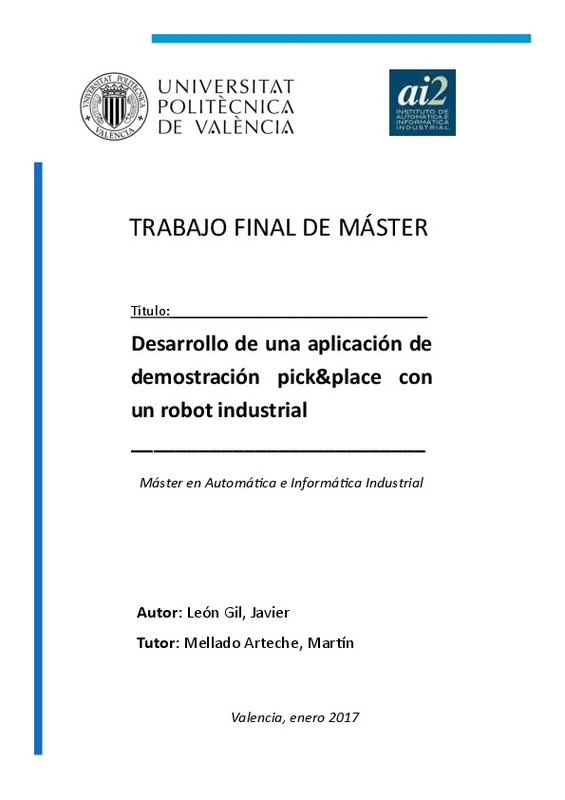|
Resumen:
|
[EN]
In this Master's Thesis, it has been developed the entire process of creating a
demonstration of an industrial robotic application, specifically designed for the industrial
bakery subsector, within the agro-food ...[+]
[EN]
In this Master's Thesis, it has been developed the entire process of creating a
demonstration of an industrial robotic application, specifically designed for the industrial
bakery subsector, within the agro-food sector, but could be extrapolated to multiple industrial
sectors where it could be necessary to make a classification of the objects that enter the
production lines available downstream from the location of the robot used.
This application aims to focus and demonstrate the great possibilities that incorporate the
use of robotics and automation in the industrial manipulation sector, currently performed in a
large proportion by human workers, implying a high risk of possibility of food contamination by
contact. The introduction of robotics not only corrects this aspect but also enables a more
efficient and flexible production, since many more data on the state of the products can be
obtained thanks to the sensors incorporated in the production chain. Even the same system is
a method of quality control, since the use of artificial vision cameras can detect the state of
the individual product, making food traceability a simple aspect of the production chain. In
addition, it allows to reduce considerably the risks of work accident, since the robots can carry
out repetitive actions and dangerous for the operators.
The project is focused on the creation of a hamburger breading application for the brand
Dulcesol (collaborator of the Institute of Automatic and Industrial Informatics), allowing with it
the voluntary choice, both instantaneous and programmed in time, of the percentage of
product that passes on each side of the production line.
During the course of the project, it has been carried out all the necessary work for the
implementation of a robotic application, from the modeling of the tools or grippers used to the
demonstration of the application operation within the technical characteristics of the
equipment used, through the installation of the necessary equipment and the own
programming of the application.
[-]
En el laboratorio de automatización para el sector alimentario (LASA) del instituto ai2 se desarrollan tecnologías para la manipulación de alimentos en constante colaboración con empresas de nuestro entorno. Para ver el ...[+]
En el laboratorio de automatización para el sector alimentario (LASA) del instituto ai2 se desarrollan tecnologías para la manipulación de alimentos en constante colaboración con empresas de nuestro entorno. Para ver el potencial del grupo, resulta necesario poner en valor los acuerdos alcanzados con empresas colaboradoras, que por ejemplo, suministran y ceden diversos equipos. En breve se espera contar con un robot manipulador industrial cedido por la empresa Stäubli y se pretende que el/la alumno/a se encargue de preparar una aplicación de demostración.
Las tareas a desarrollar en la tesina serán:
- Estudiar la problemática, necesidades y posibilidades de la manipulación robotizada de alimentos
- Conocer el equipamiento y aprender su operación y programación
- Diseñar la aplicación de demostración
- Estudiar el layout más adecuado
- Seleccionar y encargarse de la adquisición de los componentes necesarios
- Programar la aplicación
- Preparar su puesta a punto.
Será el propio estudiante el que proponga, con una orientación profesional, la aplicación y sus requisitos, así como el equipamiento necesario (sensores, visión, etc) dentro de las posibilidades económicas del grupo.
[-]
|







